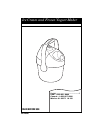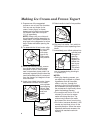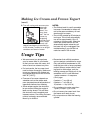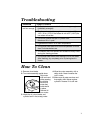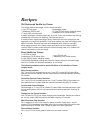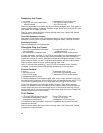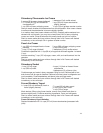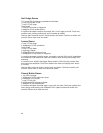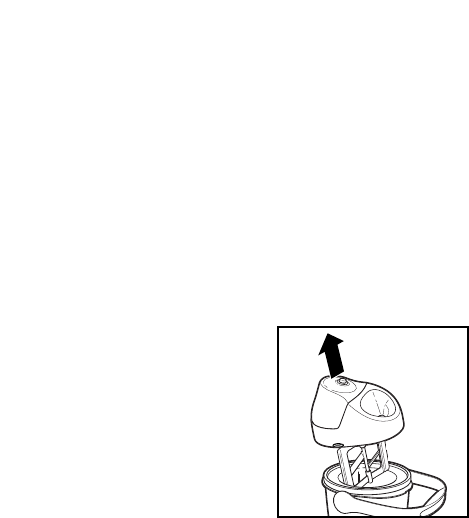
5
Making Ice Cream and Frozen Yogurt
(cont.)
8. Turn off, unplug and remove motor
assembly
from the
bowl. You
may “sea-
son” the ice
cream by
wrapping
cylinder bowl
with a clean
towel until
desired consistency is reached (up
to 30 minutes) Transfer to an airtight
container and store in freezer.
NOTES:
• The finished result is a soft, spoonable
ice cream. Homemade ice cream will
not be the same consistency of hard
store-bought ice cream.
• The unit will operate for 90 minutes to
two hours. The unit will automatically
turn off for approximately 10 to 15
minutes to cool the motor. When the
motor has cooled then the unit will
atuomatically restart unless the unit
has been turn off or unplugged. See
troubleshooting if your unit did not
make ice cream in 60 minutes.
Usage Tips
• We recommend you always keep
your ice cream bowl in your freezer
so that you can make ice cream, chill
wine or serve ice cubes at any time.
• For best results, the ice cream bowl
must be frozen thoroughly. Make sure
to set your freezer at the coldest set-
ting (temperature should not be more
than º0F [-18ºC].)
• Firmness of ice cream depends on
variables such as the recipe used,
room temperature and temperature of
ingredients before churn-freezing.
• Some recipes require the mixture to
be pre-cooked. Make the recipe at
least one day ahead. This will allow
the mixture to cool completely and
increase volume. Pre-chilling the base
mixture is strongly recommended.
Never try to shortcut.
• Remember that artificial sweetener
can be used as a substitute for sugar.
Only add artificial sweeteners to mix-
tures that are cold or have completely
cooled. When a recipe calls for heat-
ing liquid to dilute sugar, omit the
heating process and simply stir in the
sweetener until it is well dissolved.
1 packet sweetner = 2 teaspoons
(10 ml) sugar
6 packets =
1
⁄4 cup (60 ml)
8 packets =
1
⁄3 cup (80 ml)
12 packets =
1
⁄2 cup (125 ml)
• Do not attempt to make more than
1 quart (4 cups/1 L)) at a time.
• Do not remove ice cream bowl from
the freezer until ready to use.
• Do not puncture or heat the freezing
cylinder.



